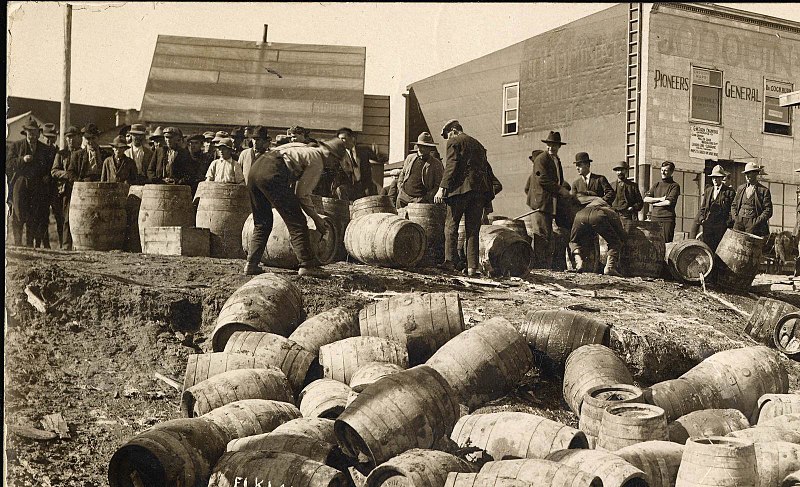This article chronologically highlights significant events that occurred on April 7th through history, showcasing moments of human innovation, conflict, and transformation.
From the foundational legal reforms of Justinian I in 529 to the technological achievement of launching Mars Odyssey in 2001, these events span the realms of law, education, exploration, music, and geopolitics.
This journey through time not only underscores the milestones that have shaped our world but also reflects the enduring nature of human progress and the complexities of our collective past.
April 7th Events in History
529 – The first draft of the Corpus Juris Civilis, a fundamental work in jurisprudence, is issued by Eastern Roman Emperor Justinian I
The Corpus Juris Civilis, or “Body of Civil Law,” was commissioned by Justinian I, the Eastern Roman (Byzantine) Emperor, to reform and consolidate the complex and antiquated legal texts of Roman laws.
Also Read: April 6 – On this Day in History
Completed in 529 AD, this collection became the foundation of Roman law in the Byzantine Empire. It was divided into four parts:
- The Digest (Digesta)
- The Code (Codex)
- The Institutes (Institutiones)
- The Novels (Novellae Constitutiones)
The Corpus Juris Civilis had a profound impact on the development of legal thought in the West and remained a central part of legal education, influencing the civil law traditions of modern Europe and beyond.
1348 – Charles University is founded in Prague
Charles University, founded in Prague on April 7, 1348, by Charles IV, Holy Roman Emperor and King of Bohemia, is one of the oldest universities in the world and the oldest in Central Europe.
It was established as a studium generale with faculties of theology, law, medicine, and arts, to educate the clergy and the administrative class.
Also Read: April 8th Events in History
Throughout centuries, it has been a center of scholarly and scientific endeavor, playing a key role in the development of Czech culture and society.

1521 – Ferdinand Magellan arrives at Cebu
On April 7, 1521, Portuguese explorer Ferdinand Magellan, sailing under the Spanish flag, arrived at the island of Cebu in the Philippines during his circumnavigation of the globe. This marked the first European contact with the Philippine archipelago.
Magellan forged alliances with local rulers and converted some of them to Christianity. However, his journey took a tragic turn when he was killed in the Battle of Mactan, led by the local chieftain Lapu-Lapu, later that month.
1724 – The premiere of Johann Sebastian Bach’s St John Passion BWV 245 at St. Nicholas Church, Leipzig
The St John Passion, BWV 245, one of Johann Sebastian Bach’s most profound works, had its premiere on April 7, 1724, at the St. Nicholas Church, Leipzig, Germany. This oratorio, written for the Good Friday Vespers service, narrates the Passion of Christ as told in the Gospel of John.
Bach’s ability to convey deep religious emotion through complex chorales, arias, and recitatives in this work has made it a cornerstone of Western classical music, performed regularly around the world, especially during the Easter season.
1776 – Captain John Barry and the USS Lexington capture the Edward
On April 7, 1776, Captain John Barry, commanding the USS Lexington, a brigantine in the Continental Navy of the United States, captured the British sloop Edward near the coast of Virginia.
This event was significant as it represented one of the first naval victories for the fledgling United States during the American Revolutionary War.
Barry, often referred to as the “Father of the American Navy,” went on to have a distinguished career, capturing numerous British ships and contributing to the strategic successes of the American forces.
1788 – Settlers from the United States arrive at the site of present-day Marietta, Ohio, beginning the westward expansion of the United States
On April 7, 1788, a group of settlers led by General Rufus Putnam established a settlement at the confluence of the Muskingum and Ohio Rivers in the territory that would become the state of Ohio.
This settlement, named Marietta in honor of Marie Antoinette, the French queen who supported the American Revolution, was the first permanent American settlement in the Northwest Territory.
The Northwest Ordinance of 1787 had opened this vast area to settlement, stipulating that the land would be organized into townships and sold to help pay the national debt. Marietta’s founding marked the beginning of the westward expansion of the United States beyond the Appalachian Mountains.
1798 – The Mississippi Territory is organized from Spanish lands
The Mississippi Territory was organized on April 7, 1798, from lands ceded by Spain to the United States as part of the Treaty of San Lorenzo or Pinckney’s Treaty of 1795.
This area, which now comprises the states of Mississippi and Alabama, was organized to govern and settle the region.
The establishment of the Mississippi Territory was part of the United States’ efforts to expand its borders and influence across the continent, laying the groundwork for further expansion and the eventual formation of new states.
1805 – Ludwig van Beethoven’s Symphony No. 3 in E♭ major (Eroica) premieres in Vienna
Ludwig van Beethoven’s Symphony No. 3 in E♭ major, Op. 55, known as the Eroica (Heroic), premiered on April 7, 1805, in Vienna. This work represented a significant breakthrough not only for Beethoven but also for the symphonic genre, introducing a scale and emotional scope not previously seen.
Initially dedicated to Napoleon Bonaparte, whom Beethoven admired as a symbol of freedom and democracy, Beethoven famously rescinded the dedication when Napoleon declared himself Emperor, seeing it as a betrayal of the principles he had admired.
The Eroica is celebrated for its innovation, complexity, and profound emotional impact.
1827 – John Walker, an English chemist, sells the first friction match
John Walker, an English chemist, made the first sale of friction matches on April 7, 1827. Walker’s matches, which he called “Congreves” in honor of the inventor Sir William Congreve, could be ignited by striking them against a rough surface.
Although Walker did not patent his invention, it marked a significant advancement in making fire easily accessible to the general public.
His friction matches laid the foundation for modern match-making techniques and significantly impacted daily life by providing a convenient and reliable means of starting a fire.
1906 – Mount Vesuvius erupts and devastates Naples
On April 7, 1906, Mount Vesuvius, a volcano in southern Italy near Naples, erupted, causing widespread devastation. This eruption was one of the most significant in Vesuvius’s history since the infamous eruption in 79 AD that destroyed the Roman cities of Pompeii and Herculaneum.
The 1906 eruption led to the deaths of more than 100 people and the displacement of thousands, as well as significant damage to the surrounding areas. It served as a stark reminder of the powerful forces of nature and the risks posed by living in close proximity to active volcanoes.
1927 – The first long-distance public television broadcast (from Washington, D.C., to New York City, displaying the image of Commerce Secretary Herbert Hoover)
On April 7, 1927, a significant milestone in the history of telecommunications was achieved with the first long-distance public television broadcast. This event featured a live image of Commerce Secretary Herbert Hoover, transmitted from Washington, D.C., to New York City.
This broadcast was a pioneering effort in the development of television technology, demonstrating the potential of television to bring live events to viewers across great distances.
The achievement was made possible through the collaboration of the Bell Telephone Laboratories and the Department of Commerce, marking a key step towards the television becoming a central medium in global communication and entertainment.

1933 – Prohibition in the United States is repealed for beer of no more than 3.2% alcohol by weight, eight months before the ratification of the XXI amendment
On April 7, 1933, a significant amendment to the Prohibition laws in the United States came into effect, allowing for the sale of beer with an alcohol content of up to 3.2% by weight (approximately 4% by volume), several months before the complete repeal of Prohibition with the ratification of the Twenty-first Amendment in December of that year.
This partial repeal marked the end of the Prohibition era, which had begun in 1920 with the enactment of the Eighteenth Amendment and the Volstead Act, banning the sale, production, and transportation of alcoholic beverages.
The modification of the law in 1933 was a response to public opposition to Prohibition and was seen as a way to reduce crime associated with the illegal alcohol trade and generate tax revenue during the Great Depression.
1948 – The World Health Organization is established by the United Nations
The World Health Organization (WHO) was established on April 7, 1948, a date that is now celebrated as World Health Day.
As a specialized agency of the United Nations, the WHO was created to promote public health, provide leadership on global health matters, outline health research agendas, set norms and standards, provide technical support to countries, and monitor health trends globally.
The establishment of WHO was a response to the need for a cooperative and coordinated approach to addressing global health issues, including infectious diseases, malnutrition, and poor sanitation, especially in the aftermath of World War II.
1956 – Spain relinquishes its protectorate in Morocco
On April 7, 1956, Spain officially relinquished its protectorate in northern Morocco, recognizing the country’s independence. This act followed the recognition of Moroccan independence by France, which had controlled other parts of Morocco, on March 2 of the same year.
The end of the Spanish protectorate marked a significant moment in Morocco’s struggle for independence and was a step towards the dismantling of colonial empires in Africa.
It followed years of negotiation, resistance, and conflict, and it helped pave the way for the establishment of the modern Moroccan state.
1969 – The Internet’s symbolic birth date: publication of RFC 1
April 7, 1969, is considered the symbolic birth date of the Internet, with the publication of RFC 1 (Request for Comments).
RFC 1 was authored by Steve Crocker of the University of California, Los Angeles (UCLA), to document the methods of internetworking protocols and procedures for the ARPANET, which was the precursor to the modern Internet.
This document laid the groundwork for the development of protocols that would eventually form the basis of the Internet’s architecture. The RFC series has continued to function as a primary means of sharing developmental and technical information among network researchers and developers around the world.
1971 – President Richard Nixon announces his decision to increase the rate of American troop withdrawals from Vietnam
On April 7, 1971, President Richard Nixon announced his decision to increase the rate of American troop withdrawals from Vietnam, signaling a significant phase in the United States’ strategy to reduce its military involvement in the Vietnam War.
This announcement was part of Nixon’s “Vietnamization” policy, which aimed to transfer more combat roles to South Vietnamese forces while gradually pulling out American troops. The policy was a response to growing domestic opposition to the war in the United States and aimed to bring about a negotiated peace.
However, the conflict continued until the signing of the Paris Peace Accords in 1973, officially ending America’s direct military involvement in Vietnam.
1983 – During STS-6, astronauts Story Musgrave and Don Peterson perform the first Space Shuttle spacewalk
On April 7, 1983, during the STS-6 mission, astronauts Story Musgrave and Don Peterson performed the first spacewalk (extravehicular activity, or EVA) from a Space Shuttle. The shuttle in question was Challenger.
This milestone event marked the beginning of a new era in space exploration, demonstrating the shuttle’s capability for facilitating spacewalks and expanding the possibilities for construction, repair, and maintenance tasks in space, such as satellite deployment and the assembly of the International Space Station in later years.
The success of this spacewalk validated the versatility and utility of the Space Shuttle as a tool for human spaceflight and extravehicular activities.
1994 – The Rwandan Genocide begins, one day after the assassination of Rwandan President Juvénal Habyarimana
The Rwandan Genocide, a tragic and devastating period of mass slaughter, began on April 7, 1994, one day after the assassination of Rwandan President Juvénal Habyarimana when his plane was shot down near Kigali Airport.
The genocide was carried out by members of the Hutu majority government against the Tutsi minority and moderate Hutu sympathizers. Over the course of approximately 100 days, an estimated 800,000 to 1 million Tutsi and moderate Hutu were killed.
The genocide was marked by the international community’s failure to intervene and has led to widespread reflection on the responsibilities of the global community to prevent such atrocities.
2001 – Mars Odyssey is launched
Mars Odyssey, a robotic spacecraft mission to Mars, was launched on April 7, 2001. Managed by NASA’s Jet Propulsion Laboratory, the mission’s primary goal was to map the Martian surface and search for evidence of water and ice. It also aimed to study the planet’s geology and radiation environment.
Mars Odyssey became the longest-serving Mars spacecraft, providing valuable data that has been crucial for future missions and our understanding of Mars. Its findings, including the detection of significant amounts of water ice beneath the Martian surface, have played a key role in the ongoing exploration of the Red Planet.
2003 – U.S. troops capture Baghdad; Saddam Hussein’s regime falls two days later
On April 7, 2003, U.S. troops captured Baghdad, the capital of Iraq, leading to the fall of Saddam Hussein’s regime two days later. This event was a pivotal moment in the Iraq War, which began in March 2003 with the goal of dismantling Hussein’s regime and eliminating its alleged weapons of mass destruction.
The fall of Baghdad marked the end of major combat operations, but it also began a long period of occupation, insurgency, and conflict within the country. The capture of Baghdad was significant in demonstrating the military capability of the United States and its allies but also underscored the challenges of restoring stability and governance in the aftermath of the conflict.
